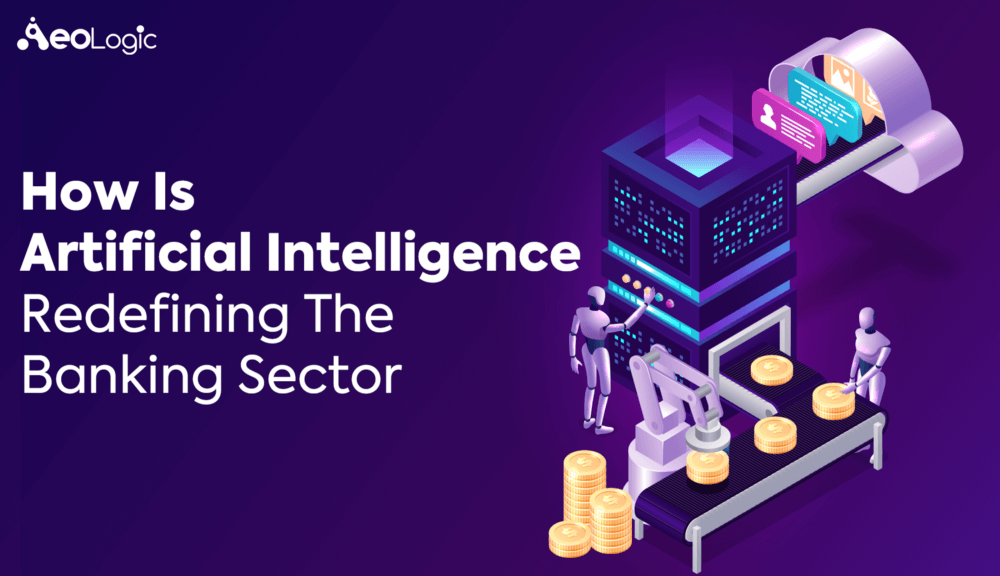Artificial Intelligence has enabled computer systems to perform tasks that require human intervention. Machine Learning is a key building block of Artificial Intelligence and it helps in making choices that machines cannot without the help of a human being. The banking industry is very sensitive in such cases which results in more severe and long-term loss of credibility of the company providing the financial services.
The banking industry is undergoing a profound change with the advancement of technologies like Artificial Intelligence. There are some banks who have already tried AI and then those who are now trying to implement it in their systems to figure out what AI can do. Currently, the focus of the financial institutions is on the user experience rather than the bottom line.
Why AI Matters?
Our new, exciting reality is that AI is here, and it is transforming financial services. Integration of AI improve developments in the financial sector and leaves a positive impact on the industry. Today’s customer can easily access their bank accounts through a smartphone. It became easier to clear your bills through an online payment facility provided by the bank. If you talk about making an investment, AI has resolved this issue by minimizing the risk factor. The industries already adopted AI has improved their processes in different ways.
Where Does AI Really In Banking
AI has impacted every banking “office” — front, middle, and back. That means even if you know nothing about the way your financial institution uses, say, complex machine learning to fend off money launderers or sift through mountains of data for fraud-related anomalies, you’ve probably at least interacted with its customer service chatbot, which runs on AI.
Customer Support & Front Office
Like fabric softener and football, banks — or at least banks as physical spaces — have been cited as yet another industry that’s being killed by those murderous Millennials. But consumer-facing digital banking actually dates back decades, at least to the 1960s, with the arrival of ATMs.
Since then, banks’ customer support expectations haven’t really changed in terms of what they expect, but how they expect them is another story. Artificial intelligence has clearly impacted this landscape, with AI-enabled chatbots and voice assistants now the norm at major financial institutions. We’re also seeing AI impact biometric authorization and, for those who enjoy the occasional throwback visit to a physical bank, AI-enabled robotic help.
Fraud Protection & Middle Office
While artificial intelligence hasn’t dramatically reshaped customer-facing functions in banking (at least relative to other service industries), it has truly revolutionized so-called middle office functions.
The middle office is where banks manage risk and protect themselves from bad actors. That includes fraud detection, anti-money laundering initiatives, and know-your-customer identity verification. And sometimes that means incorporating AI into legacy, rules-based anti-fraud platforms.
Scam Recognition
Scam deduction was becoming very challenging for the banking sector before artificial intelligence. Banking frauds were increasing day today. Different banks tried to identify the factors but couldn’t succeed. Scams start using advanced tactics but artificial intelligence has stopped it.AI make it easier to recognize the factors involved in frauds and support investigation teams. It handles different complex situations and tactics. It is capable enough to develop a new approach to understanding the transactions in crucial aspects to identify the scam factor. Deep learning is a significant factor in AI that supports recovering complex patterns within data. This tactic is used in reveling fraud. It drives towards real-time scam solutions for the banking sector. It enhances security with fraud prevention tactics.
Bio-Metric Identification
Today biometric technologies are rapidly using at data centers. Such technologies support face recognition and speech detection too. In today’s banking sector or financial services, rental scans and other biometric technologies are also using. All of these technologies have supported in enhancing security measures and authenticate access for internal clients. Today’s client can easily access banking application through smartphones in a unique way.
Client Personalization
The banking department is focused to enhance customer experience. According to a famous digital banking report, the consumer always wants to share personal information if they’re able to share deep insights. Al enables personalized communications through complete online support and management. It has automated services with different algorithms. Its algorithms rebalance regularly to update client investment and offer guidelines. Its personalization and communication have improved client support with customized solution development for the market. Artificial intelligence (AI) has provided support to banks, firms, insurers, and markets with a powerful set of tools. These tools effectively transform and streamline the fundamental functions and core operations. The adoption of AI technologies are undoubtedly challenging but support in reshaping complete procedures with new developments. This transformation is capable enough to provide extensive advantages.
Trading & Stock Investments
AI of banking in most probable circumstances will be used for ‘large algorithmic trading’ which uses the large volumes of high-velocity data to overcome the competition and provide value to customers. AI is especially useful in high-frequency trading and ultra-fast trade execution where a robot has an advantage over human trading.
Final Thoughts
AI is not a single technology but a comprehensive group of technologies that support interaction enhancement. This is a mastermind behind all innovations that are highly recommended to support management. There is a digital tsunami coming up and it is certainly disrupting traditional business processes across all segments of banking.
The key is to focus on seamlessly incorporating this technology into existing processes, while also maintaining a human touch with customers. In other words, to build AI solutions that engage employees and put the customer first. The most effective way to achieve this ideal is through the deployment of a single platform, seamlessly integrating and analyzing data from all customer channels and across the organization.






